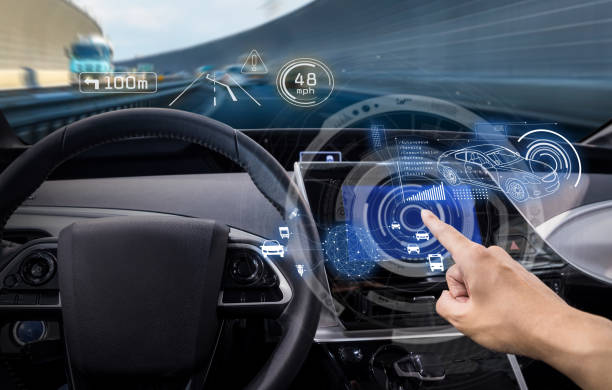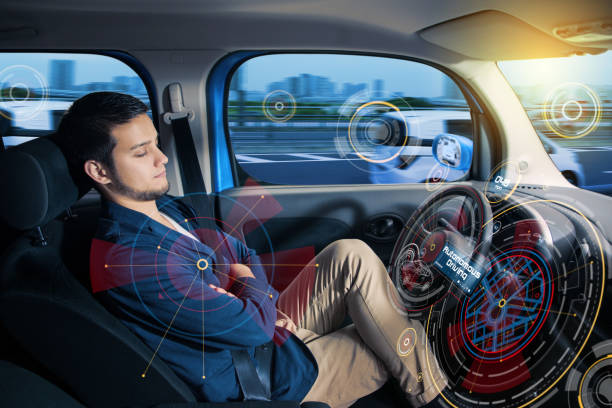Introduction
The integration of human-centric design principles in the development of autonomous vehicles represents a critical paradigm shift in the automotive industry, focusing on the user experience, safety, and trust in autonomous technologies. As autonomous vehicles evolve from a conceptual possibility to a tangible reality, numerous patent challenges arise, necessitating a deep understanding of the intricate intersection between technology, human behavior, and legal considerations. In this article, we delve into the patent challenges in autonomous vehicle human-centric design, exploring key hurdles, innovative solutions, and best practices for navigating the complex intellectual property landscape in this transformative domain.

Understanding the Significance of Human-Centric Design in Autonomous Vehicles
Autonomous vehicles, with their potential to redefine transportation, have highlighted the need for a human-centric approach to design, emphasizing user experience, safety, and trust as paramount considerations. Human-centric design in the context of autonomous vehicles encompasses various aspects, including:
- User Experience (UX) and Human-Machine Interaction (HMI): Focusing on intuitive interfaces, seamless interactions, and effective communication between the autonomous vehicle and its occupants to ensure a comfortable and trust-inspiring user experience.
- Safety and Trust: Prioritizing the development of robust safety features, ethical decision-making frameworks, and transparent communication strategies to instill confidence and trust in the autonomous vehicle technology among users and stakeholders.
- Accessibility and Inclusivity: Addressing the diverse needs of users, including individuals with disabilities or special mobility requirements, through the implementation of accessible design features and inclusive technological solutions.
Key Patent Challenges in Autonomous Vehicle Human-Centric Design
The pursuit of patents in the domain of autonomous vehicle human-centric design is accompanied by several challenges that require careful consideration and strategic planning. Some of the key patent challenges include:
Navigating the Interdisciplinary Landscape
Autonomous vehicle human-centric design necessitates the convergence of expertise from various fields, including automotive engineering, human-computer interaction, psychology, and industrial design. Patent applicants must navigate the interdisciplinary landscape, effectively capturing the synergies between technology and human behavior in their patent applications.
Addressing Ethical and Safety Concerns
Integrating ethical decision-making frameworks and safety considerations into autonomous vehicle human-centric design requires comprehensive patent strategies that align with regulatory guidelines and ethical principles. Balancing technological advancements with ethical considerations poses a significant challenge for patent applicants, necessitating a thorough understanding of the legal and ethical implications of autonomous vehicle technologies.
Ensuring User Privacy and Data Security
Autonomous vehicles, equipped with advanced sensing and data collection capabilities, raise concerns regarding user privacy and data security. Patent challenges in this context revolve around developing innovative solutions for data anonymization, secure data storage, and robust privacy protection mechanisms while ensuring that these measures do not hinder the efficacy of human-centric design features.
Navigating Complex User Interface Innovations
Patenting user interface innovations that facilitate seamless interactions between users and autonomous vehicle systems requires clear and precise articulation of the unique features and functionalities embedded within the interface design. Overcoming the challenges associated with patenting complex user interface innovations entails drafting comprehensive patent applications that effectively capture the technical intricacies and user experience enhancements.
Demonstrating Novelty and Inventiveness in UX Solutions
User experience innovations in autonomous vehicles demand a robust demonstration of novelty and inventiveness to differentiate from existing solutions. Patent applicants must emphasize the unique value proposition and technological advancements embedded within the UX solutions, highlighting the tangible benefits and improvements in user engagement, comfort, and overall experience.
Innovative Solutions and Best Practices in Patenting Autonomous Vehicle Human-Centric Design
Overcoming the patent challenges in autonomous vehicle human-centric design requires the adoption of innovative solutions and best practices that foster the protection and commercialization of groundbreaking inventions. Some of the key innovative solutions and best practices include:
Collaborative Research and Development Initiatives
Collaborating with research institutions, industry partners, and technology experts can foster an environment of collaborative innovation, enabling the development of holistic human-centric design solutions that integrate cutting-edge technologies with user-centric approaches.
Proactive Engagement with Regulatory Bodies
Establishing proactive engagement with regulatory bodies and policymakers fosters a better understanding of evolving regulatory frameworks and facilitates the integration of compliance measures within autonomous vehicle human-centric design solutions, ensuring alignment with legal requirements and ethical standards.
Strategic Patent Portfolio Management
Implementing a strategic patent portfolio management approach that emphasizes comprehensive patent coverage, regular portfolio reviews, and the identification of potential licensing or partnership opportunities enhances the value and competitive positioning of autonomous vehicle human-centric design patents.
User-Centric Patent Drafting Strategies
Adopting user-centric patent drafting strategies that prioritize clear and concise language, detailed technical descriptions, and tangible use-case scenarios enables the effective communication of the innovative features and functionalities embedded within autonomous vehicle human-centric design solutions, enhancing the patent’s enforceability and market potential.
Continuous Innovation and User Feedback Integration
Fostering a culture of continuous innovation and integrating user feedback into the design and development process enables the refinement and optimization of autonomous vehicle human-centric design solutions, fostering user trust and acceptance while enhancing the patent’s market relevance and commercial viability.

Future Trends and Emerging Technologies in Autonomous Vehicle Human-Centric Design
Looking ahead, the future of autonomous vehicle human-centric design is poised to witness the emergence of several transformative trends and technologies that will shape the direction of patent strategies in this domain. Some of the key future trends and emerging technologies include:
Emotive AI and Personalized User Experiences
The integration of emotive artificial intelligence (AI) and personalized user experience solutions will enable autonomous vehicles to establish emotional connections with users, fostering a sense of trust, comfort, and familiarity in human-vehicle interactions.
Biometric Authentication and User Recognition
Incorporating biometric authentication and user recognition technologies into autonomous vehicle human-centric design solutions will enhance security measures and enable personalized user settings and preferences for a more tailored and seamless driving experience.
Adaptive Environment and Sensory Stimulation
The development of adaptive environments and sensory stimulation technologies within autonomous vehicles will enhance user comfort and well-being, catering to individual preferences and needs through personalized lighting, temperature control, and ambient experiences.
Collaborative Design Ecosystems and Open Innovation Platforms
The emergence of collaborative design ecosystems and open innovation platforms will foster greater collaboration between stakeholders, enabling the co-creation of human-centric design solutions that leverage collective expertise, insights, and resources to drive innovation and address complex patent challenges.
Integration of Augmented Reality and Virtual Reality Interfaces
The integration of augmented reality (AR) and virtual reality (VR) interfaces into autonomous vehicle human-centric design solutions will revolutionize the in-vehicle entertainment, communication, and productivity experiences, redefining the concept of mobility and user engagement within autonomous vehicles.
Conclusion
In conclusion, the patent challenges in autonomous vehicle human-centric design present both complexities and opportunities for innovators seeking to transform the future of transportation through user-centered innovations. By understanding the significance of human-centric design, addressing key patent challenges, adopting innovative solutions and best practices, and anticipating future trends and emerging technologies, patent applicants can navigate the dynamic landscape of autonomous vehicle human-centric design, contributing to the development of safe, intuitive, and user-friendly autonomous transportation ecosystems.

